The Fourth Industrial Revolution Risks Leaving Women Behind
Corinium
AUGUST 6, 2019
The term was coined in 2016 by Klaus Schwab, the founder and executive chairman of the World Economic Form. The Fourth Industrial Revolution is, ostensibly, upon us.
This site uses cookies to improve your experience. To help us insure we adhere to various privacy regulations, please select your country/region of residence. If you do not select a country, we will assume you are from the United States. Select your Cookie Settings or view our Privacy Policy and Terms of Use.
Cookies and similar technologies are used on this website for proper function of the website, for tracking performance analytics and for marketing purposes. We and some of our third-party providers may use cookie data for various purposes. Please review the cookie settings below and choose your preference.
Used for the proper function of the website
Used for monitoring website traffic and interactions
Cookies and similar technologies are used on this website for proper function of the website, for tracking performance analytics and for marketing purposes. We and some of our third-party providers may use cookie data for various purposes. Please review the cookie settings below and choose your preference.

Corinium
AUGUST 6, 2019
The term was coined in 2016 by Klaus Schwab, the founder and executive chairman of the World Economic Form. The Fourth Industrial Revolution is, ostensibly, upon us.

CIO Business Intelligence
OCTOBER 17, 2024
Another news report dated 2016 shows Jain as the Founder and CEO of AiNET, which “designs, constructs, operates, and supports Internet data centers, optical fiber networks, and easy-to-understand cloud solutions. “If The scheme allegedly put the SEC’s data security and operational integrity at risk.
This site is protected by reCAPTCHA and the Google Privacy Policy and Terms of Service apply.
Data Talks, CFOs Listen: Why Analytics Are Key To Better Spend Management
Mastering Apache Airflow® 3.0: What’s New (and What’s Next) for Data Orchestration
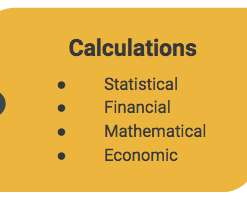
DataRobot Blog
APRIL 29, 2022
This provides a great amount of benefit, but it also exposes institutions to greater risk and consequent exposure to operational losses. The stakes in managing model risk are at an all-time high, but luckily automated machine learning provides an effective way to reduce these risks. What is a model?

Smart Data Collective
JUNE 14, 2019
In 2016, this was demonstrated by IBM when they developed a new machine learning algorithm to edit the video footage for the trailer for the upcoming horror film Morgan. However, there are other risks from a societal standpoint. There is already a risk that they can prejudicially tent the jury.

CIO Business Intelligence
APRIL 10, 2025
Energy use has become an important expense to monitor as well, along with more traditional IT costs and risk management. TBM alternatives Logistics provider KUOG has been using TBM since its inception in 2016, says CEO and president Roy Rucker Sr.

Cloudera
NOVEMBER 13, 2024
Founded in 2016, Octopai offers automated solutions for data lineage, data discovery, data catalog, mapping, and impact analysis across complex data environments. It allows users to mitigate risks, increase efficiency, and make data strategy more actionable than ever before.

In(tegrate) the Clouds
DECEMBER 21, 2015
I enjoy the end of the year technology predictions, even though it’s hard to argue with this tweet from Merv Adrian: By 2016, 99% of readers will be utterly sick of predictions. 2016 will be the year of the data lake. In 2016, which software company will be the biggest game-changer for the long term? Does Elon Musk count?

O'Reilly on Data
APRIL 5, 2023
In 2016, Microsoft’s Tay chatbot was shut down after making racist and sexist comments. We need to think about the risks and about how much someone would be harmed when the AI makes a mistake.” Although the edtech example is hypothetical, there have been enough cases of AI bias in the real world to warrant alarm.
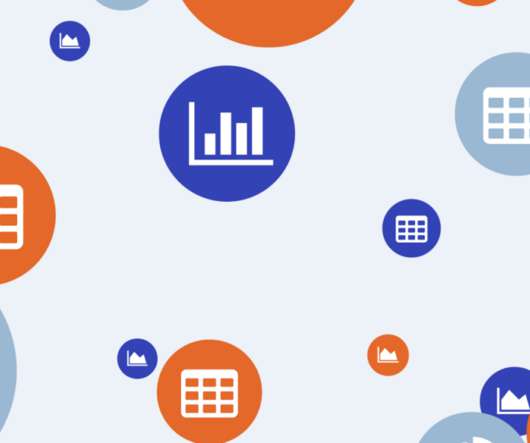
Alation
FEBRUARY 20, 2020
Considering what we’ve seen this year in industry trends and patterns, we have compiled some predictions for 2016 from our co-founders at Alation. 2016 will be the year of the “logical data warehouse.” In 2016, these will increasingly be deployed to query multiple data sources. Data sprawl has been prevalent for several years.

Sisense
APRIL 24, 2019
Taxing the production database for exploratory or duplicative reports is an unnecessary risk. For example, let’s assume 200 sales have been made in the year 2016, and we want to query for the number of sales per customer in 2016. HAVING Sales.LastSaleDate BETWEEN #1/1/2016# AND #12/31/2016#. FROM Customers.

CIO Business Intelligence
SEPTEMBER 17, 2024
Brian Jackson, principal research director and lead author of the report, said, “preparedness is critical as organizations face increasing risks from ‘Harvest Now, Decrypt Later’ cyberattacks.” The most urgent among them is that quantum computing will inevitably be able to crack a majority of the encryption methods that we use today.”

CIO Business Intelligence
APRIL 6, 2022
Russia certainly has demonstrated its cyber power and capabilities in the past; a key example was the 2016 incident in which Russian hackers took out Ukraine’s power grid. . The White House urged each at-risk U.S. But to many people’s surprise, the cyber-attacks have been limited and targeted rather than widespread. Beyond the U.S.
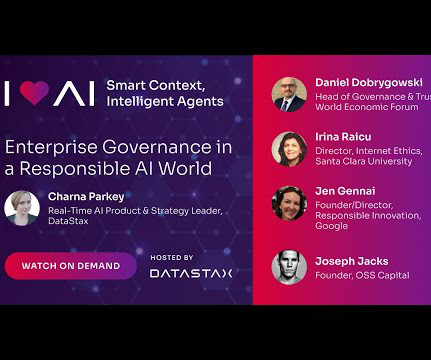
CIO Business Intelligence
SEPTEMBER 8, 2023
The easy things: A clear understanding of AI terminology and risks There’s a host of things that can be established with relative ease early in an organization’s AI journey. This context is important not just to meet your audience where they are, but also to understand risks that are specific to the context of your AI application.

Smart Data Collective
SEPTEMBER 26, 2022
2016 DOS attack on Lloyds, Royal Bank of Scotland and Halifax. In November 2016, 9,000 Tesco Bank users suffered a financial loss that occurred over a period of 48 hours. We are not liable for risks or issues associated with using or acting upon the information on this site. Tesco Bank.
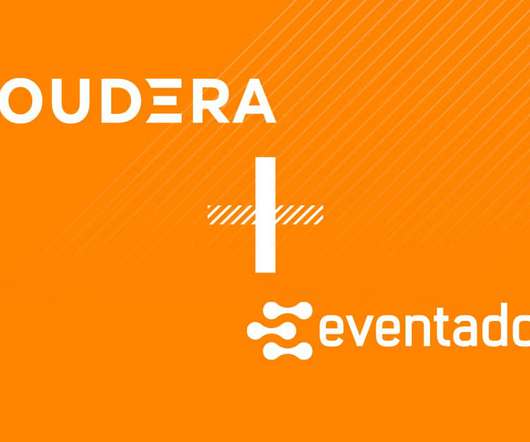
Cloudera
OCTOBER 12, 2020
Eventador, based in Austin, TX, was founded by Erik Beebe and Kenny Gorman in 2016 to address a fundamental business problem – make it simpler to build streaming applications built on real-time data. Risk management and real-time fraud analysis for IT and finance teams.

CIO Business Intelligence
NOVEMBER 7, 2022
While we weren’t naïve to the risk of disruption to the business, the extent and magnitude was greater than we anticipated.” The auditors noted that rollout of “the first phases” of CLS was now expected that same year, and added recommendations on managing outsourcing risk to their earlier warnings. By March 2019, things were slipping.

CIO Business Intelligence
SEPTEMBER 7, 2022
Cropin Apps, as the name suggests, comprises applications that support global farming operations management, food safety measures, supply chain and “farm to fork” visibility, predictability and risk management, farmer enablement and engagement, advance seed R&D, production management, and multigenerational seed traceability.

CIO Business Intelligence
JANUARY 19, 2024
While the original NIS1 Directive of 2016 was viewed as a major evolution in cybersecurity regulation, a lot has changed since then, particularly assumptions about the risk posed by an expanding range of cyberattacks. At that time, cybersecurity was seen primarily as a problem faced by individual organizations.

CIO Business Intelligence
OCTOBER 17, 2023
Target Level Zero Trust includes meeting the minimum set of 91 activities to help secure and protect the enterprise while managing risks from currently known threats. This partial solution may introduce more cyber risk because it makes it more convenient for hackers to attack the entire enterprise.

CIO Business Intelligence
JULY 23, 2024
The goal is to reduce risks and ensure that AI projects deliver practical benefits to customers and improve operational efficiency. Chet successfully took Apigee public before the company was acquired by Google in 2016. This means setting clear ethical guidelines and governance structures within their organizations.

Smart Data Collective
SEPTEMBER 7, 2021
This global coffee brand has increased its revenue by 26% from 2016 to 2019. Thus, Starbuck defines areas that potentially will be successful and mitigate risks of opening in unprofitable ones. Starbucks leverages innovative technologies to improve its business operations, and big data is no exception.

CIO Business Intelligence
NOVEMBER 23, 2022
The rush to partner with startups can result in relationships that are not aligned to both parties’ interests, leading to significant business-technology risks for a CIO. In the absence of a multistage due diligence process, an enterprise could face third-party risks. Partnering with startups is an option for CIOs across the globe.

Smart Data Collective
SEPTEMBER 22, 2021
The risk of data breaches will not decrease in 2021. Data breaches and security risks happen all the time. One bad breach and you are potentially risking your business in the hands of hackers. rose from 38 million in 2016 to over 50 million in 2018. The internet has always been vulnerable to threats and risks.

Smart Data Collective
SEPTEMBER 28, 2020
According to the Symantec Internet Security Threat Report of 2016, governments’ growing dependence on information technology makes them vulnerable to ransomware attacks. In this regard, consider setting up a system for monitoring potential risk based on users’ behavior. You should measure this against an established standard.

Smart Data Collective
JULY 23, 2021
You can find numerous examples of this, such as the hacking attempts that it conducted against the United States during the 2016 Presidential Election. Russia has conducted many cyber attacks against its adversaries. Russia isn’t alone in sponsoring cyber attacks. AI was used to make this attack more effective than ever.
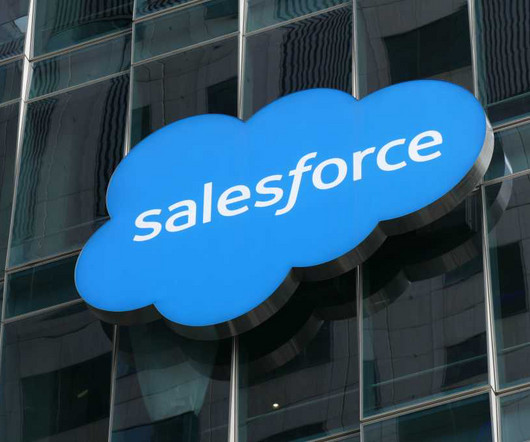
CIO Business Intelligence
MARCH 6, 2023
Launched in 2016, Salesforce Einstein is an integrated set of AI technologies that brings artificial intelligence into all Salesforce products, which the company says ultimately provides customers with more personalized and predictive experiences. However, she also warned that the technology is not without new risks and challenges.

CIO Business Intelligence
OCTOBER 4, 2023
From 2016 to 2022, the company went from processing a payments volume of $354 billion to $1.36 User data is also housed in this layer, including profile, behavior, transactions, and risk. This allows us greater productivity and creativity on the part of developers,” he says. trillion last year.

CIO Business Intelligence
JANUARY 11, 2024
The proceedings are a stark reminder that global companies need to be mindful of both the risks of their business and the need for adequate controls at the corporate level across all of their subsidiaries. The SEC filed charges against SAP back in 2016, according to the supervisory authority.

CIO Business Intelligence
APRIL 15, 2022
The patients who were lying down were much more likely to be seriously ill, so the algorithm learned to identify COVID risk based on the position of the person in the scan. The algorithm learned to identify children, not high-risk patients. The study’s researchers suggested that a few factors may have contributed.

Smart Data Collective
MAY 21, 2019
In 2016, cyber-attacks cost the United States economy between $57 billion and $109 billion. There are several ways that predictive analytics is helping organizations prepare for these challenges: Predictive analytics models are helping organizations develop risk scoring algorithms. Cybersecurity is becoming a greater concern than ever.

Smart Data Collective
MARCH 28, 2019
Fraud remains a major risk for banks, and is only set to increase as people become more open with their data. According to Financial Regulation News, banks lost $2.2bn to fraud throughout 2016, as revealed by the most recently collated statistics. Minimizing fraudulent behavior.
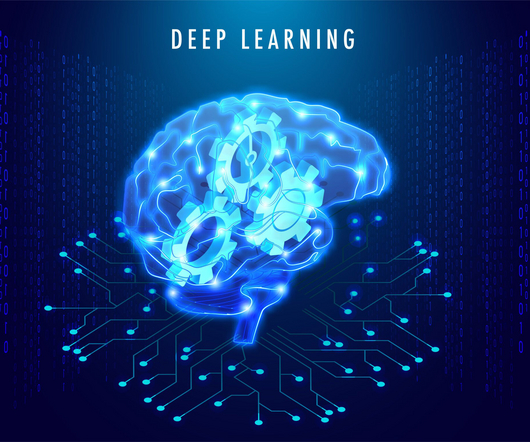
Smart Data Collective
FEBRUARY 23, 2023
The learning potential of deep learning was further demonstrated by AlphaGo in 2016 and, today, it is used increasingly to create high level software engineering (SE) tools. Another drawback of deep learning to write code is that, if the code has not been originated by a software developer, they could be at risk of committing plagiarism.

CIO Business Intelligence
JUNE 18, 2024
Through a partnership with IBM, the company began using traditional AI for analytics in 2016, to demonstrate the power of AI to customers, he says. Then, as you would onboard a junior intern, assign low-risk tasks such as routine reporting or data entry, where errors have minimal impact. Some failure should be expected.

CIO Business Intelligence
JULY 11, 2024
These CIOs have the vision, steadiness, and laser-sharp focus to navigate both the promise and the risks of disruptive technologies, positioning their teams and their organizations to gain and sustain an edge. As Randich’s team continues to analyze new risks and concerns, the benefits of the decision are clear and tangible.
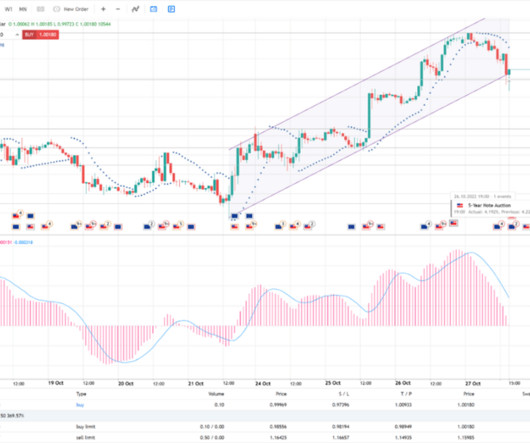
Smart Data Collective
APRIL 10, 2023
How Traders Can Mitigate the Risks of Data Breaches and AI-Driven Cyberattacks Online trading carries with it a certain degree of risk. It is essential for traders to be aware of the potential risks and take steps to mitigate them. Cybersecurity is an important factor to consider when engaging in online trading.
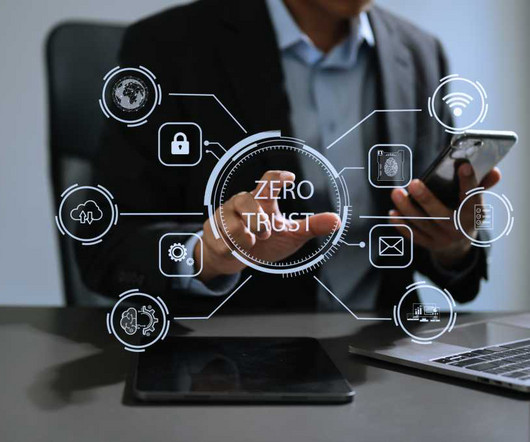
CIO Business Intelligence
SEPTEMBER 12, 2023
Given rising IoT adoption, erosion of the corporate perimeter due to work-from-everywhere, and increasingly sophisticated threats that exploit “trusted” users and devices for malicious purposes, these security approaches can expose the organization to greater risk. European Union. European Union.

Smart Data Collective
APRIL 13, 2021
After a marginal increase in 2015, another steep rise happened in 2016 through 2017 before the volume decreased in 2018 and rose in 2019, and dropped again in 2020. They can use AI and data-driven cybersecurity technology to address these risks. By 2012, there was a marginal increase, then the numbers rose steeply in 2014. In summary.

Smart Data Collective
JUNE 22, 2022
In 2016, just 7% of payments were made by a debit or credit card. For businesses and customers, removing cash also reduces the risk of payment fraud from counterfeit notes (which are a bigger issue than card payment fraud). Big data technology has made it possible for companies to offer these services. That rose to 19% by 2018.

CIO Business Intelligence
JULY 23, 2023
Since the introduction of notable data privacy and human rights acts, like GDPR in 2016 and the CCPA in 2018, privacy regulations worldwide have continued to develop aggressively. Constantly flagging and eliminating obsolete, redundant, unused, and ungoverned data reduces compliance risk, enhances efficiencies, and lowers storage costs.
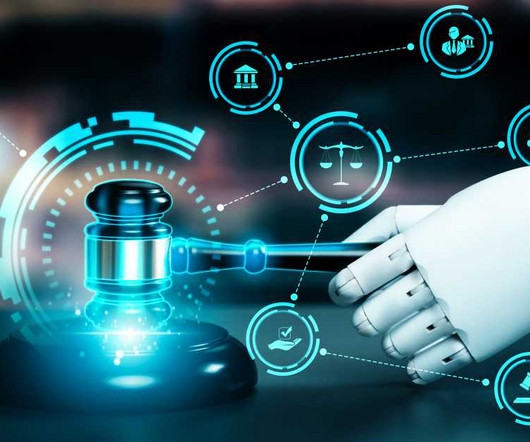
CIO Business Intelligence
JULY 17, 2024
Many governments have started to define laws and regulations to govern how AI impacts citizens with a focus on safety and privacy; IDC predicts that by 2028 60% of governments worldwide will adopt a risk management approach in framing their AI and generative AI policies ( IDC FutureScape: Worldwide National Government 2024 Predictions ).

CIO Business Intelligence
JUNE 22, 2022
Around 2016, we started talking about data in motion within the context of an enterprise data platform. The financial services industry has had to dedicate more resources to personalisation, fighting fraud, and reducing cloud concentration risk. It can be “at rest”, “in use”, or “in motion”.

CIO Business Intelligence
APRIL 30, 2022
So, when JetBlue Technology Ventures launched in 2016, Sundaram took on a dual role as founder and chairman of the investment committee. JetBlue Technology Ventures has thrived since 2016, funding 40 startups and working with dozens of founders and entrepreneurs. The CEO (and his team) rebuilt the whole platform in less than a year.

John Wheeler
AUGUST 18, 2020
This month, we continue our “20 for 20” theme by highlighting the top 20 “most read” research publications in our integrated risk management (IRM) compendium. Magic Quadrant for Integrated Risk Management, 2018. Magic Quadrant for Integrated Risk Management Solutions, 2019.

CIO Business Intelligence
APRIL 30, 2022
So, when JetBlue Technology Ventures launched in 2016, Sundaram took on a dual role as founder and chairman of the investment committee. JetBlue Technology Ventures has thrived since 2016, funding 40 startups and working with dozens of founders and entrepreneurs. The CEO (and his team) rebuilt the whole platform in less than a year.
Expert insights. Personalized for you.
We have resent the email to
Are you sure you want to cancel your subscriptions?


Let's personalize your content